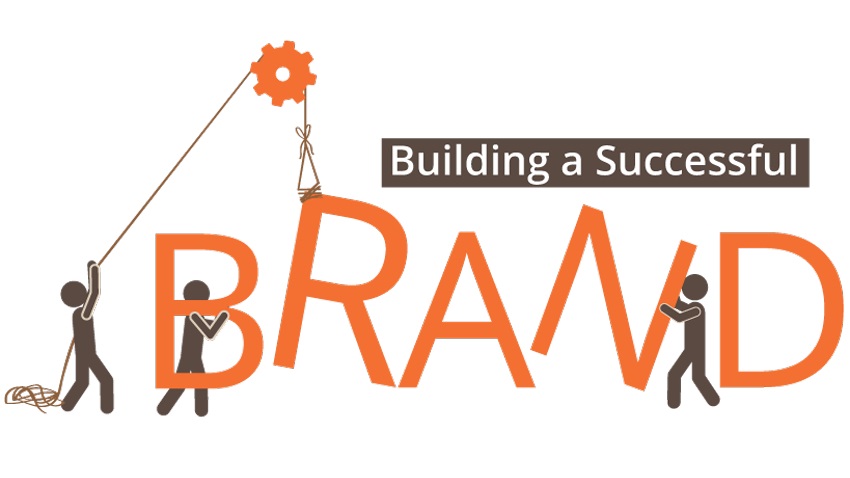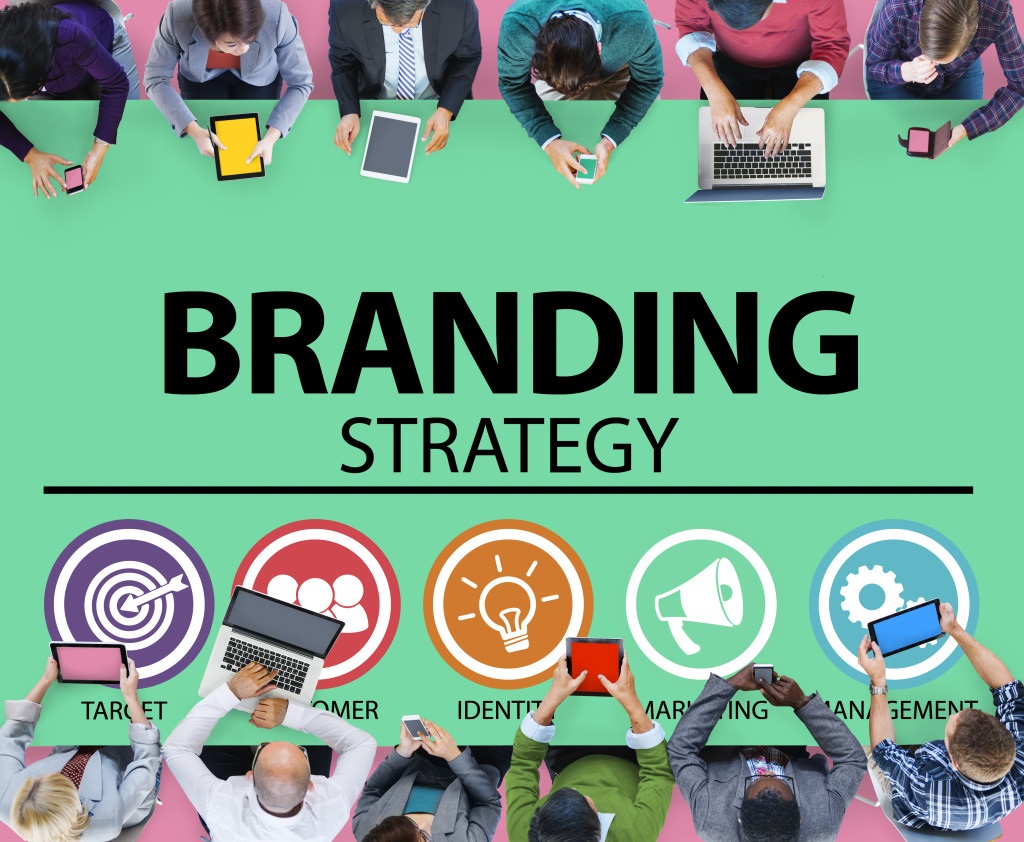
Building a Successful Brand
A well‐known and popular brand is one of the most valuable assets of the company. According to a Nelson poll, 59% of consumers prefer to buy new products from familiar brands. As a small business, you compete with big brands that have loyal customers and large marketing budgets; that is why you need to find a way to differentiate yourself and have a consistent branding process.
How to brand? Branding goes far beyond designing an attractive logo or advertising in a related medium. Branding operations need more than that.

Brand is the customer's overall understanding of your business. Amazon co‐founder Jeff Bezos has a better definition of a brand: "Your brand is what people say behind your back." Your brand is your reputation! In today's marketplace, a successful brand must be on all platforms, including store or corporate environment, written warranty, signs, packaging, website and online advertising, content production, sales and customer service, a consistent way to connect with the customer and create experience for him Have.
Do you still think branding is simple? The truth is, branding does not happen overnight or in a matter of months. Creating a brand is a process; but your constant effort builds long‐term relationships with customers. This long‐term relationship leads to a constant increase in sales, getting more projects, word‐of‐mouth advertising for existing customers and introducing new customers by them, and people supporting your products and services.
In this article, we describe the branding path in simple language to attract more loyal customers to your business or personal brand.

- Define your brand goal
- What is the reason for your existence?
- What sets you apart from others?
- What problems do you solve?
- Why should people care about you?
- Check out competing brands in your industry
- What are the capabilities of competitors' products and services?
- Do customers give feedback on competitors that you can read?
- What is the competitors' online and offline marketing method?
- Identify your brand target audience
- Develop a brand mission statement
- Identify the important features and benefits of your brand
- Provide more credible and transparent services to them
- Determine a better way to support their productivity
- Reduce their costs by offering a cheaper option
- Provide a solution to reduce the time of their daily tasks
- Set a unique tone for your brand
- Give your brand a brilliant personality
- Set a logo and slogan for your brand
- Involve your brand in all aspects of the business
- Commit to branding
Every successful brand has a big goal, you should have the same goal. When setting a brand goal, you need to answer the following four questions:
By answering these questions, you can establish the dimensions of your brand. Studies show that 50% of the world's consumers consider the values and effectiveness of a brand when buying. So do a lot of research and find the facts that set your brand apart.
You should never imitate the big brands in your industry, but you should be aware of the reasons for their success and failure. The goal is to stand out from the crowd and convince the customer to buy from you instead!
We are always thinking about how to differentiate our brand from existing brands. So never neglect this step in the branding process and research competitors or reference brands. For example, read the story of building their brand. If you want your brand name to be effective, it must be easy for consumers to identify and remember. Researching competitors is an important factor in promoting your brand. Create a comparison chart of competing brands for yourself and then answer the following important questions:
Are the competitors' messaging methods and visual effects the same on all channels?
Select a few prominent competitors, such as two to four competitors, and enter their details in the comparison table. You may also need to look at some related in‐house businesses or even emulate big brands.
The basis of branding is determining the target audience. You cannot provide everything for everyone. So when you are branding, remember who you are going to target and formulate the company's mission and marketing message to meet the needs of that group. You need to provide special services and pay attention to the behavioral details and lifestyle of your consumers.
So to determine a specialized target market, you must commit to a specific task from the beginning. When branding, you realize that limiting your target audience is an important competitive advantage. This way you can be sure that your brand message will reach exactly the intended audience.
Identify the consumers you want and create a brand for them to understand and relate to. Branding depends on a full understanding of the buyer's personality. When defining the ideal client, consider his or her age, gender, place of residence, income, and level of education. If you want to determine the character of your brand buyer more precisely, pay attention to the motivations, goals, vulnerabilities, people who influence him and his affiliation with your brand.
Have you ever thought about your brand mission? In fact, you should provide a clear definition of your company's most important issue. This is the reason why the company exists and the reason you wake up every morning. Before creating a brand that your target audience can trust, you need to determine what value your business creates for others. The mission statement identifies the reason for the organization and the various aspects of its branding strategy. Everything from the brand logo to the brand slogan, tone, message and personality is a reflection of this mission.
What do you do when people ask you? Explain your brand mission statement.
When branding, start small and focus on your target market first. Over time, people's loyalty to your brand increases so that you can be present in other markets.
There are always brands that dominate their industry for more budget and resources, but the products, services and benefits you offer are yours alone. Creating an unforgettable brand requires offering something that others do not. Focus on the features and benefits that make your company brand unique.
Now that you know the target audience exactly, give them a reason to choose your brand over the brand of others. Remember that you should not just provide a list of product or service features to the customer; Rather, you need to provide customers with values that enhance their lives, including:
The tone of your brand depends on the mission of your company, your audience and your industry. Brand tone is how to communicate with customers and how they respond. Brand tone can be professional, friendly, service‐oriented, authoritative, technical, advertising, conversational or informative, based on different characteristics and possibilities.
Finally, you need to set a tone for your brand that is meaningful and reaches the target audience. If you find the right tone for your brand and use it properly, you have the best chance of reaching out to consumers. Brand tone is especially important when writing an article on a blog or posting on social media. Having a consistent tone helps the audience of all social channels have the same image of your brand. Followers, readers or members of the site expect a consistent tone and personality from your brand when using your content.
Customers are no longer looking for a typical company that offers the same old stuff, but for completely customized experiences that meet their needs and personal and real interactions. If you want to create a unique brand, try to highlight your brand personality in all stages of branding. In contact with all customers, be loyal to your brand personality and act accordingly.
When you think of building a brand, the first thing that probably comes to mind is the brand logo. Need help designing your logo creatively? Excitement is the most exciting and important step in the branding process of determining the logo and slogan of the brand and company.
This logo is visible on everything related to your business and becomes your identity, business card and image ID. So to create an exceptional logo, spend the necessary time and money to strengthen the visual identity of your business.
The branding process never stops. Your brand should be visible and present in everything the customer sees, reads or hears about your company; For example, if a customer comes to your office or store, your brand image should be visible in the environment and in all personal interactions. The logo stamp should be on everything tangible from the business card to the banners, products and packaging.
Your logo should look the same on all digital platforms. Match visual effects such as colors, logos, fonts, and brand images across all platforms using brand design guidelines.
Your website is the most important marketing tool for your brand. When designing a website, consider the tone, message and personality of your brand throughout the content of the website. All your social media pages should have the same visual effects and brand tone.
If you want to make your brand a more effective brand by evaluating consumer feedback, you have to be consistent. Once you have defined your brand tone, apply it to all the content you produce. Put together all the guidelines you have provided for branding and provide them to the members of the company as a reference. If your branding process is not stable, it has no value. Do not constantly change the branding process. Instability confuses your customers and makes long‐term branding more difficult.

Add comments: